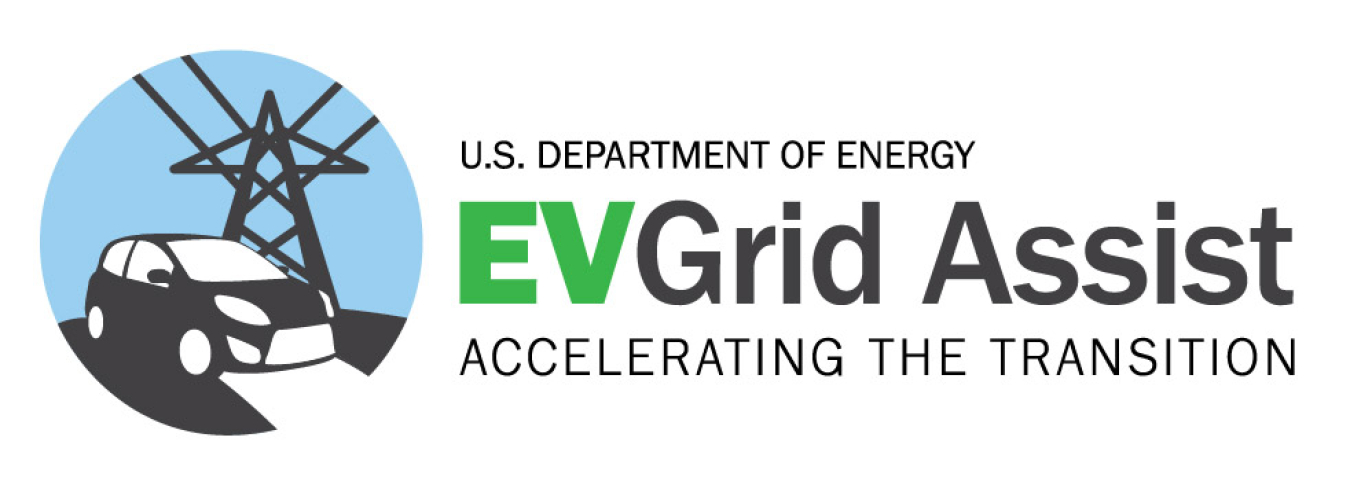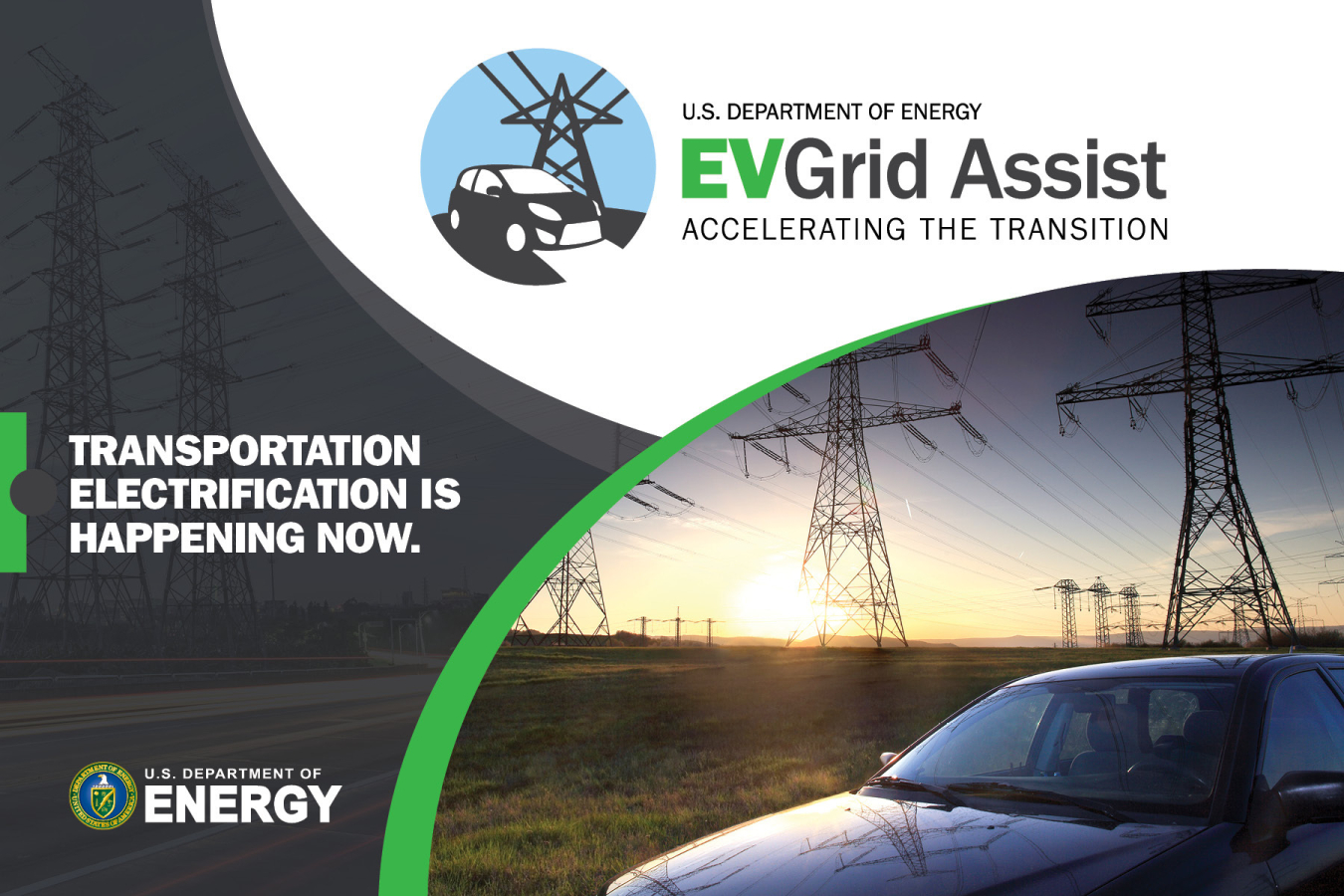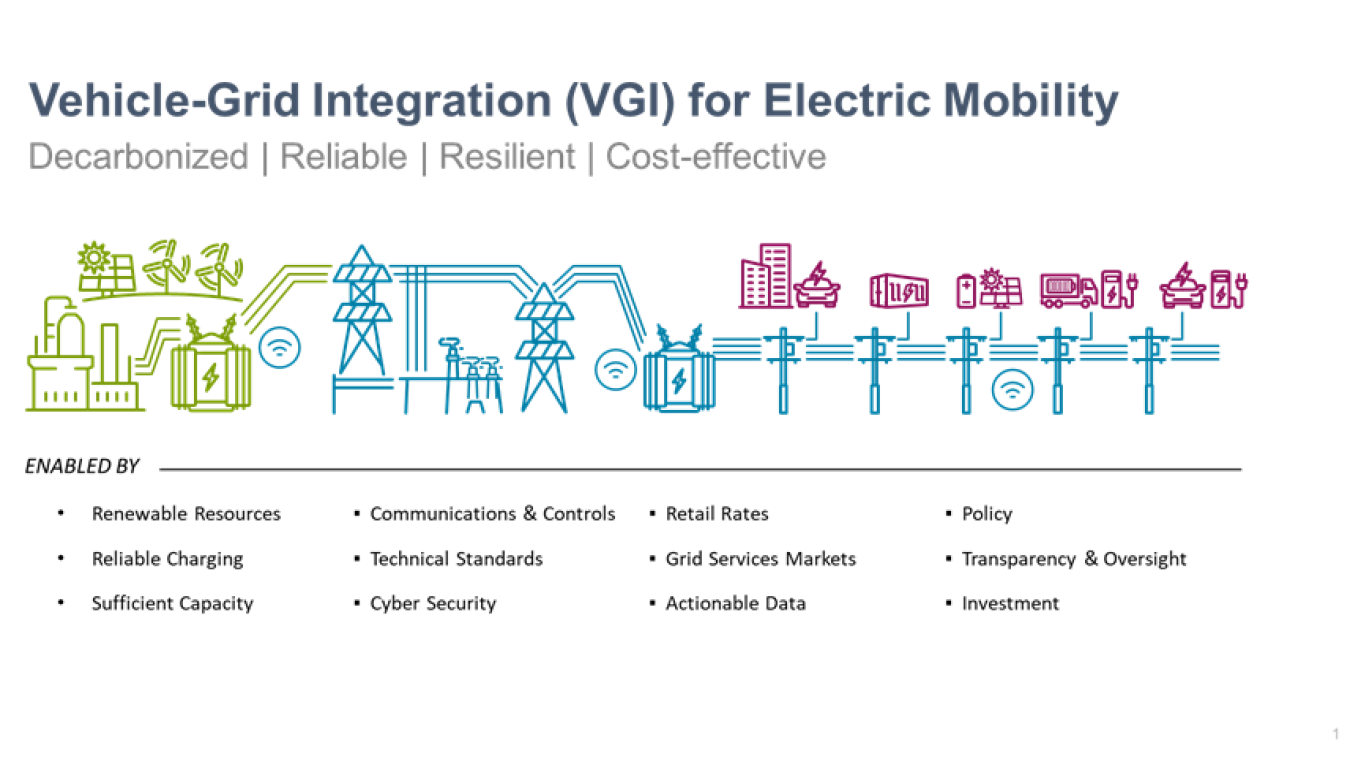Transportation electrification is happening now. Millions of electric vehicles are already hitting the road, with even more to come over the next decade. Successful integration with the electric grid will be essential for reducing emissions, maintaining reliable and resilient electricity, reducing system cost, and enabling a seamless charging experience. Switching to electricity as a vehicle fuel source offers exciting opportunities with numerous economic and environmental benefits, but will introduce an array of complex, interdependent challenges and will require increased coordination among stakeholders. The U.S. Department of Energy, through EVGrid Assist: Accelerating the Transition, will support decision makers as they plan for the future of electrification.

Resources
EVGrid Assist Reports and Tools
Register for the next webinar.
Sign up to get EVGrid Assist updates.
EVGrid Assist: Accelerating the Transition will provide technical assistance and inform research and development on vehicle-grid integration (VGI) to facilitate the rapid deployment of electric vehicles and the associated charging infrastructure by minimizing the impacts to the electric grid and helping electric utilities and regulators make planning and policy decisions. EVGrid Assist technical assistance will:
- Increase the stakeholder VGI knowledge base
- Provide pathways for stronger VGI coordination between electric utilities, regulators, manufacturers and technology providers, and other stakeholders
- Identify key VGI challenges and opportunities to address them
- Begin driving actions to resolve barriers to VGI and the rapid deployment of the national charging network
The Bipartisan Infrastructure Law has allocated to the U.S. Department of Transportation (DOT) $7.5 billion over five years to help states build out the National EV infrastructure network. Through BIL and other funding, DOE and our federal partners are working to expand the full range of EV charging options for all consumers, including residential, destination, depot, and corridor charging for light-, medium- and heavy-duty vehicle applications.
On the grid side, the Department of Energy (DOE) is responsible for disbursing $13 billion over five years for upgrading electric grid infrastructure and enhancing the system’s resilience and reliability. This investment includes $5 billion for prevention of outages and enhancing the resilience through grid hardening, $5 billion for upgrading our electric grid and ensuring reliability and resiliency, and $3 billion for the Smart Grid investment matching grant program. Because electric vehicles are one of the largest sources of new load, accounting for and minimizing the impacts of electric vehicles on the grid through effective vehicle grid integration (VGI) will be essential.
Together, the rapid changes in technology and policy, and influx of funding highlight the need for decision makers across these sectors to become knowledgeable about a growing array of complex, interdependent topics as they support and influence the switch to electrified transportation. EVGrid Assist will accelerate this decision making to achieve our shared goals.

What is VGI
Vehicle-grid integration (VGI) refers to the full suite of grid infrastructure, hardware, software controls, and the corresponding markets and regulations that enable widespread adoption of electric vehicles by coupling the transportation and electricity sectors.
VGI includes the cost-effective, intelligent integration of EVs with the electric grid to support decarbonization, maintain electricity reliability and resilience, and enable a seamless charging experience for a tightly coupled, interoperable system. VGI balances customer’s varying EV charging needs with the requirements of a highly complex and dynamic electric grid. Successful VGI lessens the need for additional grid upgrades while serving EV’s drivers’ and riders’ mobility missions and fulfilling societal and environmental obligations.

Figure 1: VGI (vehicle-grid integration) refers to the full suite of infrastructure, hardware, software, markets, and regulation that enables widespread adoption of electric vehicles by coupling the power sector and the electric sector to meet our decarbonization, reliability, resilience and cost-effectiveness goals.
Key Activities
- VGI Visioning and DOE Road Map process
- Educational Webinar Series
- Stakeholder Engagement to Resolve Technology, Policy, and Market barriers
- Vehicle to Everything (V2X) MOU
Upcoming Events
VGI Educational Webinar Series
Register for EVGrid Assist Webinars at www.EVGridAssistWebinars.com. Videos of each webinar will be linked in the list below, as they become available.
- The Importance of VGI: WATCH
- EV Basics: WATCH; Webinar highlights (PDF)
- DCFC Charging for Light, Medium, and Heavy-duty Vehicles: WATCH; Webinar highlights (PDF)
- Grid Aware Site Selection: WATCH; Webinar highlights (PDF)
- Charging Station Site Design: WATCH; Webinar highlights (PDF)
- Load Forecasting: WATCH; Webinar highlights (PDF)
- Rates and Incentives: WATCH; Webinar highlights (PDF)
- Planning for the Future: WATCH
Resource Library
Numerous resources exist that can assist stakeholders as they plan for charging infrastructure roll-out and integration with the electric grid.
Visit the EVGrid Assist resource library to learn more about the resources, reports, and tools available to help with planning for EV adoption and vehicle-grid integration.
Contact
We are interested in hearing from you! If you have recommendations about specific areas the initiative should explore, helpful resources, success stories, lessons learned, or challenges you are struggling with, please email EVGrid@hq.doe.gov.
The initiative is a cross DOE effort that is led by the Office of Electricity-Advanced Grid Research and Energy Efficiency and Renewable Energy – Vehicle Technologies Office and coordinated across offices including the Office of Technology Transitions, Office of Policy, and the DOE/DOT Joint Office of Energy and Transportation.
Sign up to receive announcements about future webinars, reports, and discussion opportunities.
